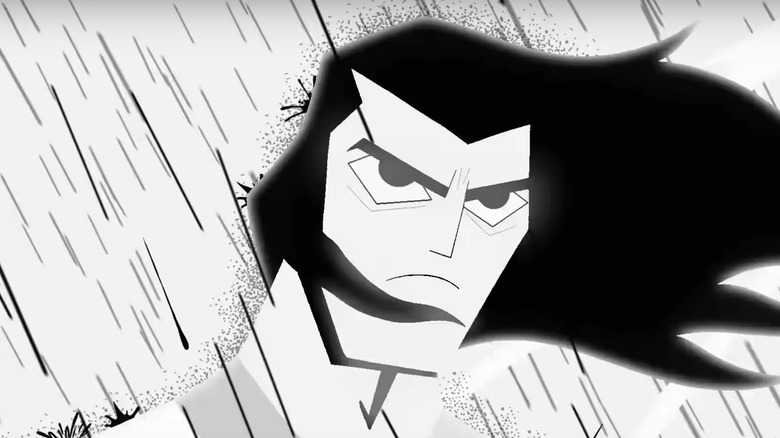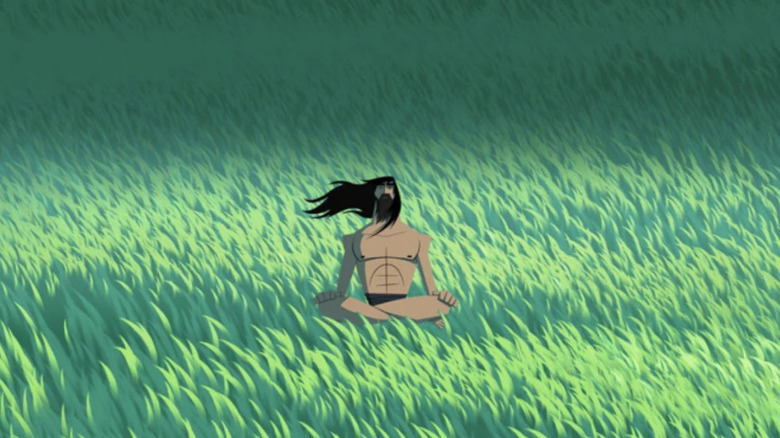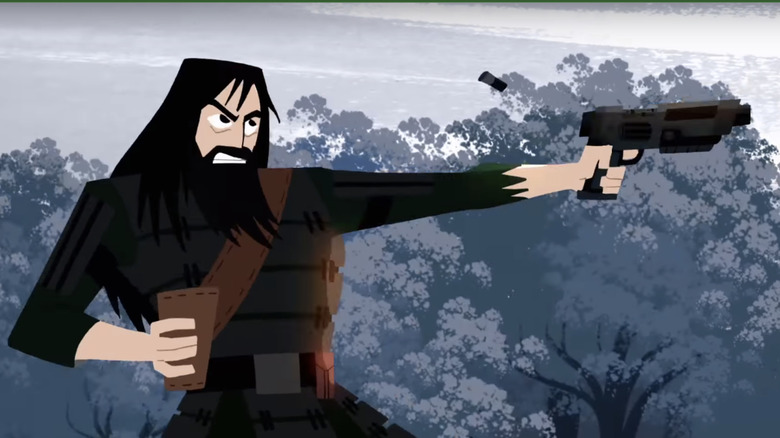Samurai Jack's Initial Run Was Saddled With A Major Story Limitation
Genndy Tartakovsky has been a champion of animation for nearly 30 years, pushing conventional storytelling's boundaries. Not only has Tartakovsky helped establish animation as a medium for telling compelling stories, but he's also helped to move it forward in style, production value, and overall class. From his early work in "Dexter's Laboratory" to his visceral and kinetic work on "Star Wars: Clone Wars," Tartakovsky has always had a knack for visual storytelling. After serving as a director and creator on "Powerpuff Girls," Tartakovsky moved on to his next project in his still-growing career.
One of his most ambitious projects was "Samurai Jack," airing on Cartoon Network. The show revolved around the stoic samurai Jack, who, after being sent into the far future by the demon Aku, is forced to wander the futuristic landscape in search of a way back to the past. This incredible premise was weighed down by one huge story limitation — one that, in time, benefited "Samurai Jack" in the future.
Hindering character growth
Speaking to The Verge about the production of "Samurai Jack," Genndy Tartakovsky revealed the story limitation that came with airing the show on Cartoon Network:
"One of the things we couldn't do in the first 52 episodes — it couldn't be episodic, which hinders your character growth. You can't have as many ups and downs, because if Cartoon Network aired the episodes out of order, he's super-dark in one episode, and cheery in another. So that forced us to make him more even-keeled, and we played him as a stoic samurai hero, unaffected by everything he's going through."
The episodic format is one Tartakovsky used to tell a genuinely emotional story in "Samurai Jack" while also meeting the Cartoon Network parameters of being an entertaining show for children. Despite the serialized restrictions put on Tartakovsky, "Samurai Jack" used its initial format to spin the show's structure as a seemingly never-ending journey to get Jack back to the past. The unbreakable will of Samurai Jack was born out of a necessity on the storyteller's part. However, unbeknownst to the show's creators at the time, this also helped the story of "Samurai Jack" when it returned for a final season in 2017, after its original 52-episode run ended in 2004.
Recontextualizing limitations
"Samurai Jack" returned for its fifth and final 10-episode season in 2017, 13 years after its run on Cartoon Network. The storyline of Jack returning to the past had remained unresolved when the show initially ended, no doubt due to the constraints on the show. However, Genndy Tartakovsky being as creative as he is, he recontextualized the limitations into a story point of the final season, acknowledging the mental toll it took on Jack to remain resolved and unmoving for so long:
"So that was one of the exciting things going into this season: 'Let's bring him down.' It's 50 years later, there's no way home, Aku won't even face him anymore, and he's lost hope. And what do you do if you're stuck in this eternal hell with the idea that you let all the people down in the past? It made all these ideas really rich for us."
Only a creator like Tartakovsky could take restrictions put on his storytelling and use them to his benefit to take audiences down a darker, more compelling road in a serial format. While limitations may have saddled some of his original work, that hasn't stopped the animator and storyteller from pushing the medium's limits with projects like his latest series, "Primal," and the currently-in-development "Fixed." Hopefully Tartakovsky and other creators will continue to tell compelling, limitless stories.


